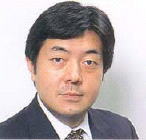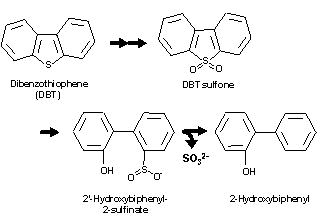(Applied Biochemistry)

(Applied Biochemistry)

(b.1960), B.S. (1983,Waseda), M.Engr.(1985, Waseda), Ph.D.(1988, Waseda), Res. Assoc. (1987,Waseda), Assist.Prof. (1989, Waseda), Assoc. Prof.(1992,Waseda).
keywords
Applied Biochemistry / Biotechnology and Bioengineering / Genetic Engineering and Molecular Breeding / Applied Microbiology / Superbugs
Room 65-312
3-4-1 Ohkubo, Shinjuku-ku, Tokyo 169-8555, Japan
Tel: +81-3-5286-3208
Fax: +81-3-3232-3889
E-mail:kkohtaro@waseda.jp
Research Interests
In his laboratory, applied biochemistry and biotechnology using biocatalysts such as enzymes and microbial cells are being studied for development of industrial bioprocess and biochemicals production.
In general, biological reactions proceed with very high substrate-specificity under mild conditions with ordinary temperature and pressure. The application of biocatalysts as regio- and stereo-specific catalysts for organic synthesis is a rapidly growing field. Therefore, biocatalysts are important and promising tools for generation of new industrial bioprocess. Moreover, in the recent years, protection of the earth from pollution has become an important problem. This trend becomes a driving force to seek for environmentally benign processes which can take the place of the conventional ones, and the concept of "green (or sustainable)-biotechnology" meaning biotechnology with low environmental impact has become to be important. Thus, the green-biotechnology is one of the main directions of his research.
Recent research fields are classifiable into the following three categories: 1) development of regio- and stereo-specific reactions using novel microbial enzymes for application to production of valuable biochemicals (3, 5), 2) screening and application to bioprocess of extremophiles, i.e. microorganisms living under extreme environments (6-8), 3) breeding of citric acid-producing fungus Aspergillus niger by genetic and metabolic engineering (1, 2, 4).
As for 1), one-step and selective ¿-glucosylation of menthol with a 100% yield through the "crystals accumulation reaction" was developed, as shown in Fig. 1. Some other enzymes applicable to biochemicals production were also characterized. For example, selective production of neoagarobiose by a novelÀ-agarase and Á-resorcinic acid by a novel decarboxylase was achieved. As for 2), biodesulfurization of gas oils by the thermophilic microorganisms was achieved, and the genes relating to degradation pathway were cloned and characterized, as shown in Fig. 2. Moreover, microorganisms degrading heterocyclic and polycyclic organic compounds were also isolated and characterized. As for 3), key enzymes related to citric acid production, such as citrate synthase, NADP-isocitrate dehydrogenase, and alternative oxidase, were cloned and genetically analyzed. Strain improvement by metabolic engineering using above-mentioned genes is now in progress.

Fig. 1. One-step and selective ¿-glucosylation of menthol by the ¿-glucosyl transfer enzyme.

Fig. 2. Biodesulfurization of dibenzothiophene (DBT) by novel thermophilic bacteria.
Representative Publications
1. "Cloning and Expression of the cDNA Encoding an Alternative Oxidase Gene from Aspergillus niger WU-2223L", Curr. Genet., 34, 472-477 (1999)
2. "Cloning and Sequencing of the Chromosomal DNA and cDNA Encoding the Mitochondrial Citrate Synthase of Aspergillus niger ", J. Biosci. Bioeng., 88, 237-243 (1999)
3. "¿-Anomer-Selective Glucosylation of Menthol with High Yield through a Crystal Accumulation Reaction Using Lyophilized Cells of Xanthomonas campestris WU-9701", J. Biosci. Bioeng., 89, 138-144 (2000).
4. "Contribution of Cyanide-Insensitive Respiratory Pathway, Catalyzed by the Alternative Oxidase, to Citric Acid Production in Aspergillus niger ", Biosci. Biotechnol. Biochem., 64, 2034-2039 (2000)
5. "Enzymatic Synthesis of ¿-Arbutin by¿-Anomer Selective Glucosylation of Hydroquinone Using Lyophilized Cells of Xanthomonas campestris WU-9701", J. Biosci. Bioeng., 93, 328-330 (2002).
6. "Biodesulfurization of Naphthothiophene and Benzothiophene through Selective Cleavage of Carbon-Sulfur Bonds by Rhodococcus sp. Strain WU-K2R", Appl. Environ. Microbiol., 68, 3867-3872 (2002).
7. "Thermophilic Biodesulfurization of Hydro- desulfurized Light Gas Oils by Mycobacterium phlei WU-F1", FEMS Microbiol. Lett., 221, 137-142 (2003).
8. "Cloning of a Gene Encoding Flavin Reductase Coupling with Dibenzothiophene Monooxygenase through Coexpression Screening Using Indigo Production as Selective Indication", Biochem. Biophys. Res. Commun., 313, 580-585 (2004).
Back to: